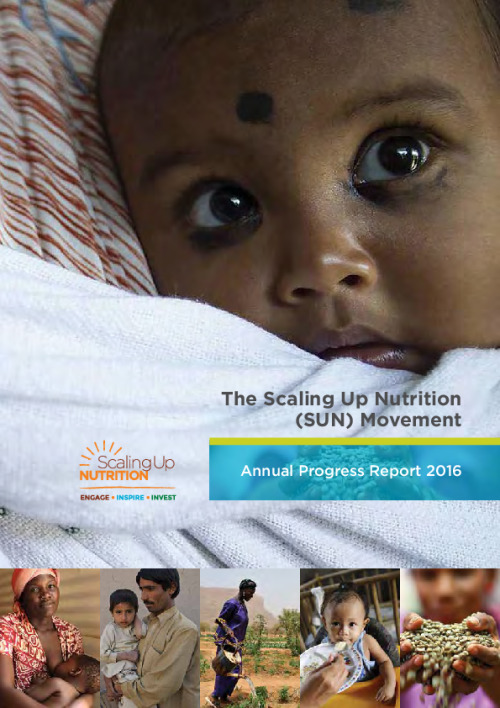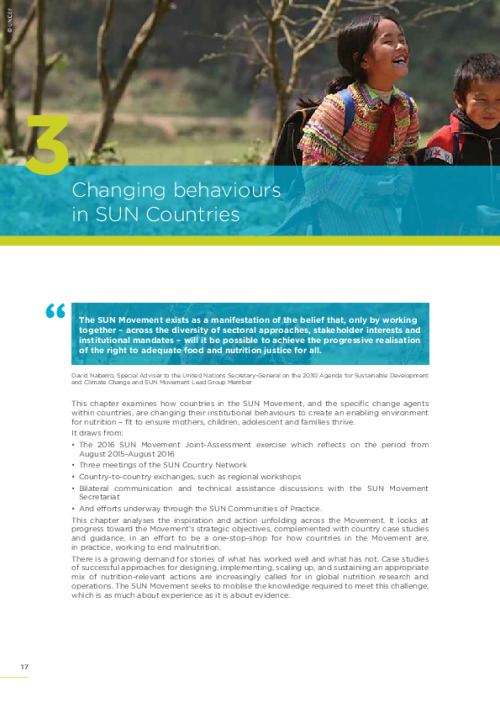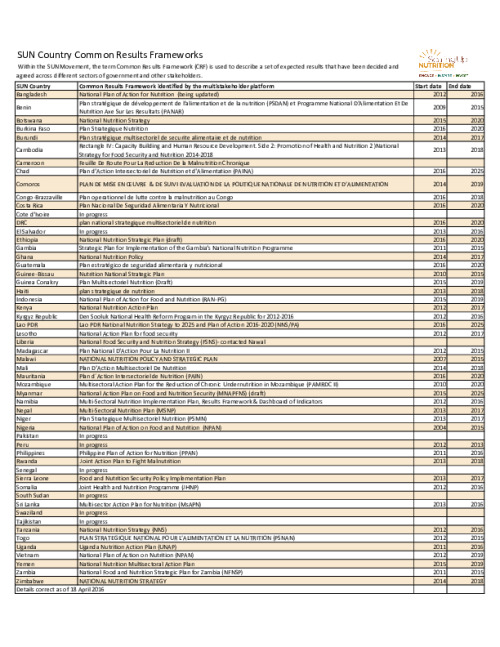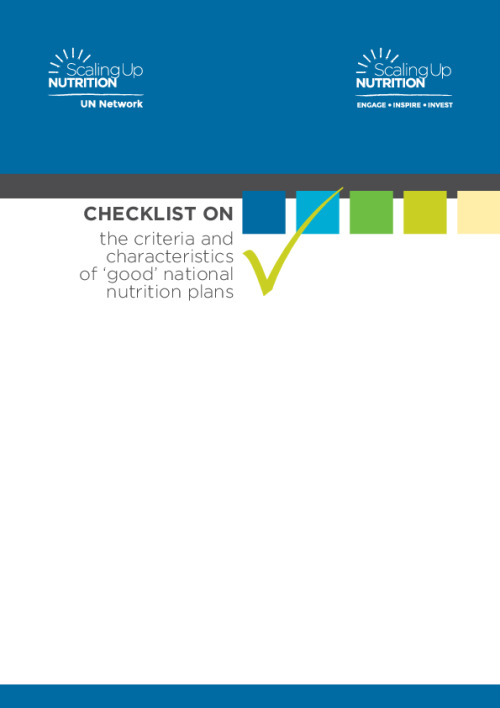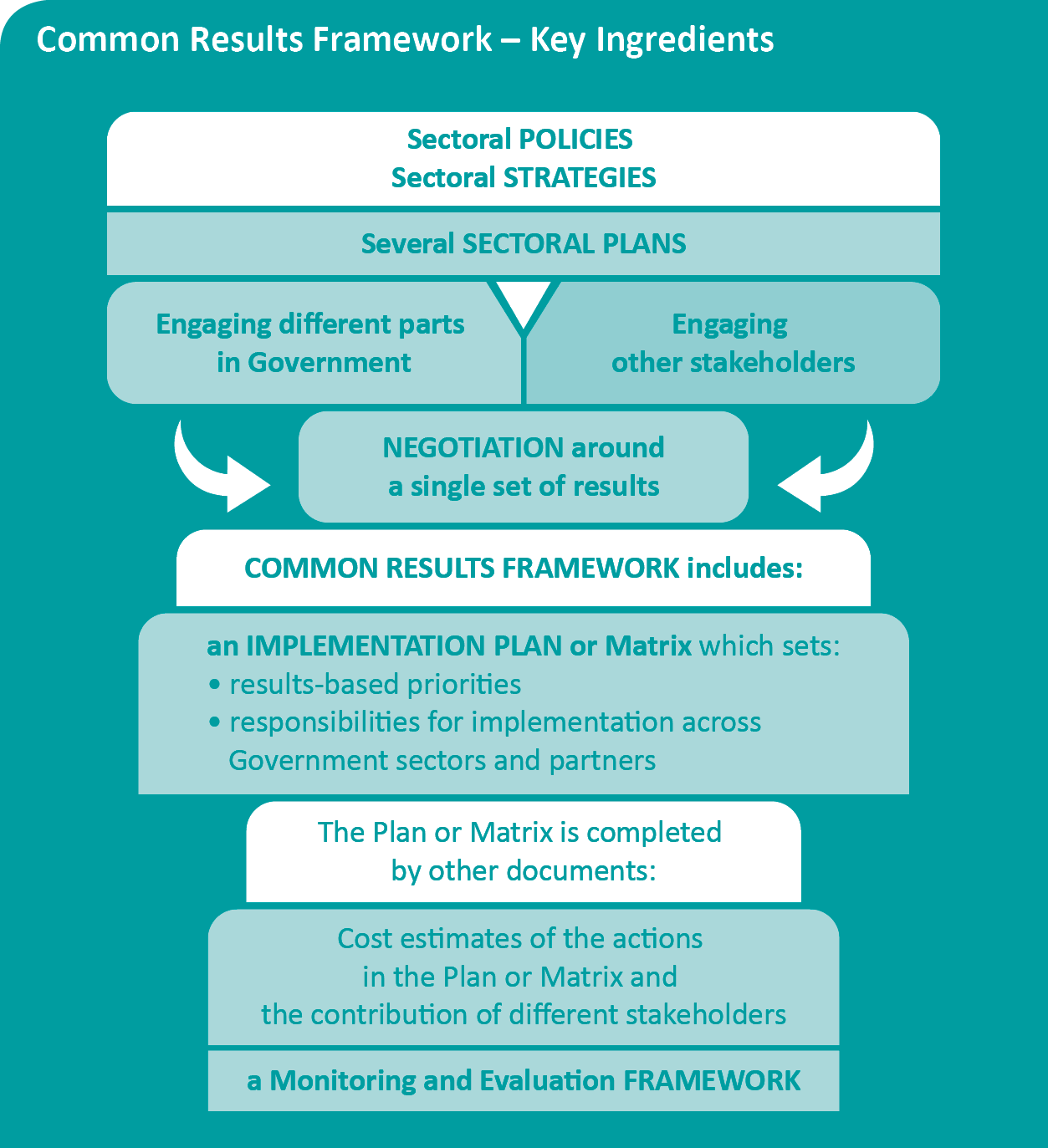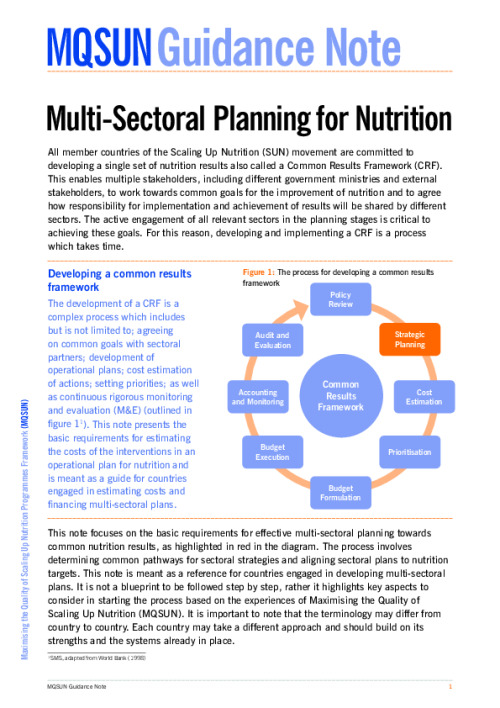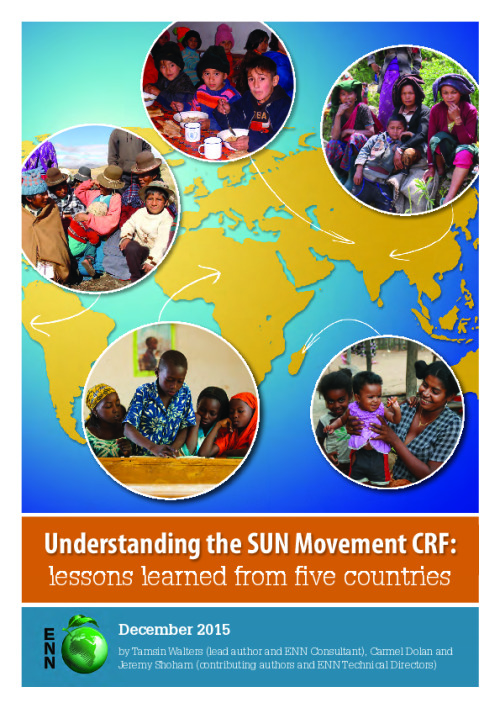What is a Common Results Framework?
Multi-sectoral nutrition plans endorsed at the highest level, guide collective implementation and resource allocation. Across the SUN Movement, these are often identified as the Common Results Framework (CRF). How this is documented is unique to each country and many include national targets and include actions which have been costed.
Regardless of where or how it manifests itself, each step and interaction in the process of negotiating a CRF add value to the national policy and budget cycle. This collaborative and comprehensive analysis allows all stakeholders to harness their collective ambition and capacities to achieve scaled up results. A well developed CRF can be a powerful vehicle for national stakeholders to translate policy into action and results and to ensure accountability to each other and to those most affected by malnutrition.
Review of SUN Country National Nutrition Plans
As of 2020, 61 countries and four Indian states have joined the global movement for Scaling Up Nutrition (SUN). Of these 61 countries, 36 had a common results framework in place in 2019, with national nutrition plans (NNP) to guide the implementation and achievement of the agreed goals and objectives. As the SUN Movement’s current strategy period draws to a close, it is important to take stock of how countries are translating their nutrition agendas into planning documents and to assess the relative key strengths and gaps across plans to inform cross-country learning and future guidance.
In support of this, in collaboration with the SUN Movement Secretariat (SMS), the Maximising the Quality of Scaling Up Nutrition Plus (MQSUN+) project conducted a systematic review of a sample of SUN NNPs based on the Checklist on the criteria and characteristics of ‘good’ national nutrition plans. The review sought to identify common strengths, areas for further development and actionable recommendations for each country to inform next steps or improve future planning. This technical brief provides a high-level summary of the review. Individual country briefs were also developed for each country and may be available upon request.
How is a Common Results Framework developed?
The process of negotiating a Common Results Framework (CRF) across multiple sectors and with multiple partners means that challenges emerge.
Valuable lessons from SUN Countries in developing a CRF include:
- It’s important to establish ownership from all stakeholders, otherwise it risks irrelevance.
- Ensure the results and actions included in the CRF reflect the realities of people suffering from malnutrition and is grounded in evidence. Context is critical and there is no one size fits all approach.
- There are variations among SUN Countries on which nutrition-sensitive strategies are incorporated into CRFs, which reflects the work underway within each country to establish appropriate nutrition-relevant goals in various sector plans – including health, agriculture, social protection and water and sanitation.
- Cost estimates and implementation approaches are most useful if they are guided by agreed targets that are established on a yearly basis within a five-year or longer timeframe.
- Actions are most likely to wield synergised and effective efforts if they pay specific attention to the nutritional needs of vulnerable individuals and communities.
- Most plans currently include specific nutrition actions in the “first thousand days” window of opportunity between conception and a child’s second birthday.
- While the health sector remains the main provider, clear links need to be established with other sectors to create the enabling environment that is required by children and women of reproductive age, including adolescent girls, to get effective benefits from nutrition-specific actions.
- The development of local level plans informed by national recommendations is essential for effective implementation.
- Agreed common results are most useful if they are translated into indicators for monitoring progress in implementation: 22 SUN Countries have developed frameworks for monitoring progress in implementation. However, not all frameworks include the data needed for the evaluation of progress toward national goals.
Key trends from the 2016 SUN Movement Annual Progress Report
- 35 SUN Countries have a CRF in place and 9 more are developing them.
- 32 SUN Countries have action plans to achieve the goals set out in their CRF.
- 24 SUN Countries have CRF’s which are fully costed with a further 8 being costed.
NEW! The first-ever checklist for quality national nutrition plans
On 19 December 2016, the UN Network for SUN and the SUN Movement Secretariat launched a checklist for good national nutrition plans, the first of its kind. There is strong consensus that harmonised support to national processes is a prerequisite for sustainable development. However, no standards or guidance has been made available to define what constitutes quality nutrition plans, which has led to the development of this Checklist.
